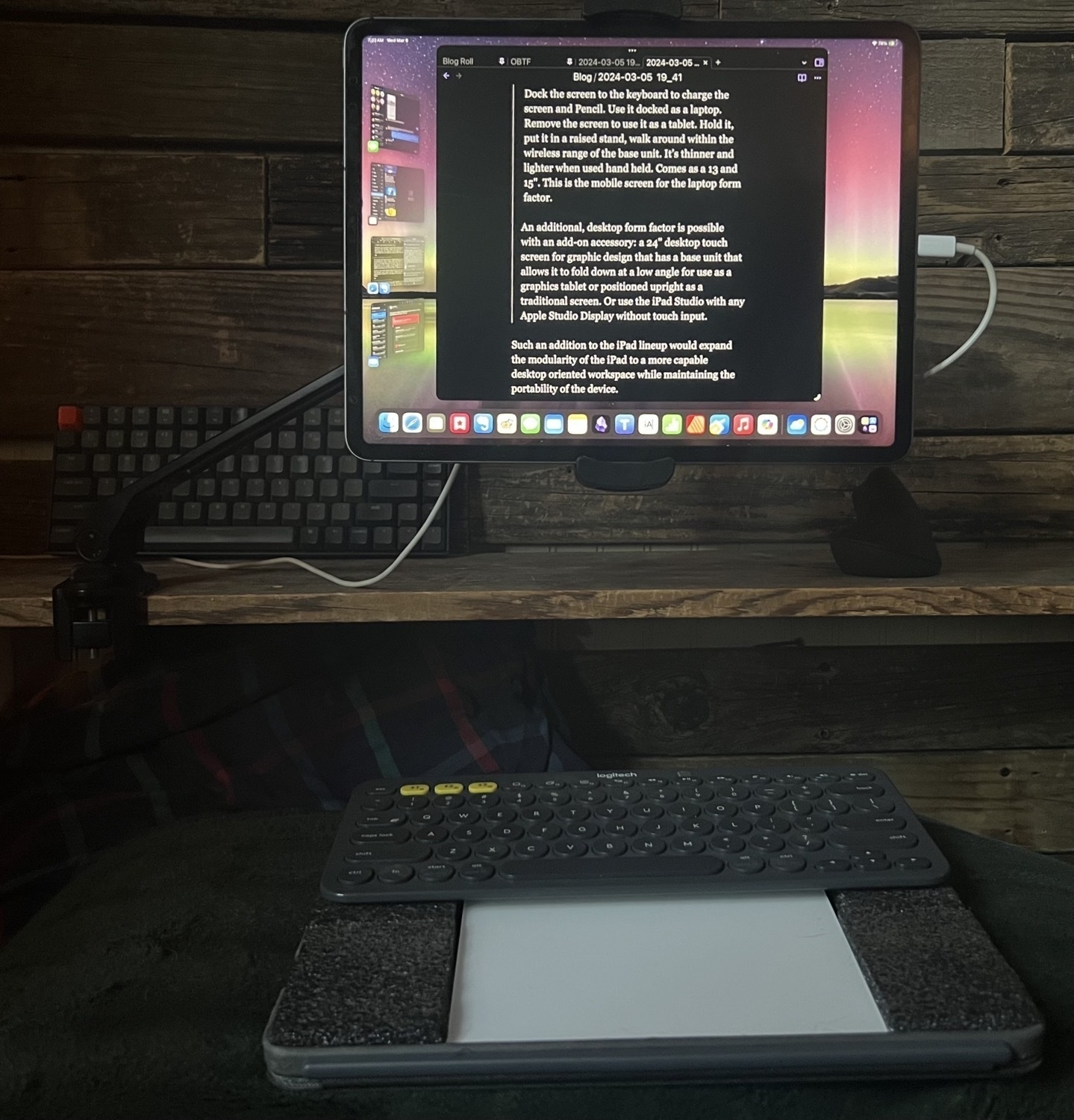The iPad Pro is its own thing and should never be a Mac
My M1 iPad Pro is only three years old so I won’t be updating this year but as someone who has chosen the iPad as a primary computer of course I’m interested in where the hardware and OS are going. I post often that I think most Apple pundits are wrong on the iPad most of the time because they want it to be a Mac. It’s not and I hope it never is. In today’s issue of his newsletter Mark Gurman writes that Apple Should Turn iPad Into Laptop Replacement and I found a couple of bits to chew on:
Now it’s time for Apple to take a stand. Does it want the iPad to be a half-baked laptop alternative or a real computing replacement? Consumers are confused about why they should buy an iPad versus a Mac and vice versa.
This “confusion” reflects the made-up reality and narrative of the Apple pundit looking for something to post about. Or, actually, it’s true if one replaces the word Consumers with Apple pundits: Apple Pundits are confused about why they should buy an iPad versus a Mac and vice versa.
Sure, of course, if someone is using a Mac, they may, upon needing to replace the device, take a look at the iPad and wonder if it could replace the Mac. Some users that are more tech-oriented are often curious about options.
There are millions of users of each category that know their next purchase will be in the same category. Many of the happiest iPad users are older users that need and want an easier, simpler computing option. For these people the iPad is all the computer they need. And those that use a Mac likely want the more open computer that they can do anything with, they already know their next computer is likely to be a Mac.
But, no doubt, the Apple Pundit audience are the Apple/tech enthusiasts that use Macs but have repeatedly purchased iPads because they want a touch screen computer. They love the form factor of a tablet but dislike iPadOS because it is not macOS. It’s really that simple.
Since the M1 and the increased memory bringing the iPad into Mac hardware territory of 8GB and 16GB, the hardware, when combined with an external keyboard and a trackpad/mouse, has been fully capable of most general computing tasks. No doubt, next week’s releases will only bring a new chorus of frustrated posts and headlines best summed up as “The iPad hardware is amazing but iPadOS is not macOS, it sucks! Let us run macOS on our iPads!” It may be even worse if the rumored new hardware keyboard case brings the iPad closer to the laptop form factor when attached. So close!
Back to Gurman:
The answer: Apple should commit to making the iPad as capable as a laptop, but in a form that tablet users prefer. The Mac should be for consumers who like working on a traditional computer; the iPad should be for people who want the option of a touch screen.
There shouldn’t be much of a difference otherwise — though people who need the highest performance (the trucks, in the Jobs analogy) are probably going to stick with Macs.

As someone who has been full time on the iPad since 2017 I’ve done what most Apple Pundits and iPad curious Mac users have not: I’ve learned how to use iPadOS. I’ve become familiar with all of the features just as I am with macOS. The result is that I already find the iPad as capable, no, more capable than a laptop or a desktop because the OS is not a limit for me and the modularity of the hardware is an asset. Unlike a Mac laptop or desktop I have a portable touch screen tablet computer with a Pencil that I also use with any number of keyboards, a trackpad and a mouse. And unlike a laptop my computer is not stuck with the permanently attached keyboard.
This picture is going to blur a bit more in the coming years because Apple is working to bring touch screens to the Mac. When that happens, choosing between a Mac and iPad will hinge more on whether you want an all-in-one device (laptop) or a modular system (iPad + Magic Keyboard + Apple Pencil).
Nope. I think he’s wrong on that as are the other pundits that want macOS on the iPad or touch screens on the Mac. The solution that fits with Apple’s thinking and bottom line is what we see with the Vision Pro and the Mac. Native Mac screen sharing built into iPadOS. When a a Mac is nearby just open its screen on the iPad as an app. There are third party screen sharing apps that do this now but they don’t allow for a full screen experience. Apple could do it better.
I wrote in early March about where I thought the iPad might go in the future were Apple to lean into modularity. Based on the notion that Apple sees iPadOS as the future of touch screen computing. Rather than bring a touch screen to the Mac or macOS to the iPad, I’m hoping for an expanded modularity with a desktop oriented iPad Studio.
Apple has too much invested in the iPad running iPadOS to deviate from their path. They’re stubborn which, in this case, I appreciate. Much to the consternation of Mac users they will continue to invest in iPadOS which will improve. It will retain it’s basic, easy-to-use safe mode for the majority of users. But new features and capabilities will be added for those that want a more macOS like experience. Pro apps like Final Cut Pro and Logic Pro for iPad will be improved and Xcode or a light version of Xcode will be introduced. The iPad will never be a Mac but it will continue to improve.